Is this the future of office design?
Today’s definition of the ‘working environment’ is a slippery concept. While traditional office spaces remain the norm – individual desks, meeting rooms, ‘breakout areas’, kitchens – the needs of most workers have changed in the past few decades in ways that leave these settings somewhat lacking.

With the advent of new technology – in particular the ability to communicate with one another and see our co-workers pretty much wherever we are – the traditional office set-up is in many ways becoming redundant.
However, for all the Skypeing, emailing and Facetime, we often need to physically be with others to truly collaborate, but the traditional office set-up isn’t usually geared toward this.
This morning, we saw the results of a four-year investigation into the idea of the Living Office by design research company Herman Miller. The company showed a number of innovative office design solutions by Industrial Facility and Yves Behar’s fuseproject.
The designs look to solve the problems of traditional office furniture and special arrangements, setting out what Herman Miller terms a ‘vision and a framework’ that looks to help companies attract and retain talent through a more desirable workplace.
Research began in 2010, and focused on the changes in the needs of a workplace, which now exists as much in the virtual as the physical space.
This has, in part, democratised the space: for many workers, the facilities of the office space and their means of communicating with colleagues can be achieved just as easily at home. As such, the modern office needs to focus on what makes the office space necessary in the first place: easy and democratic collaboration with others.
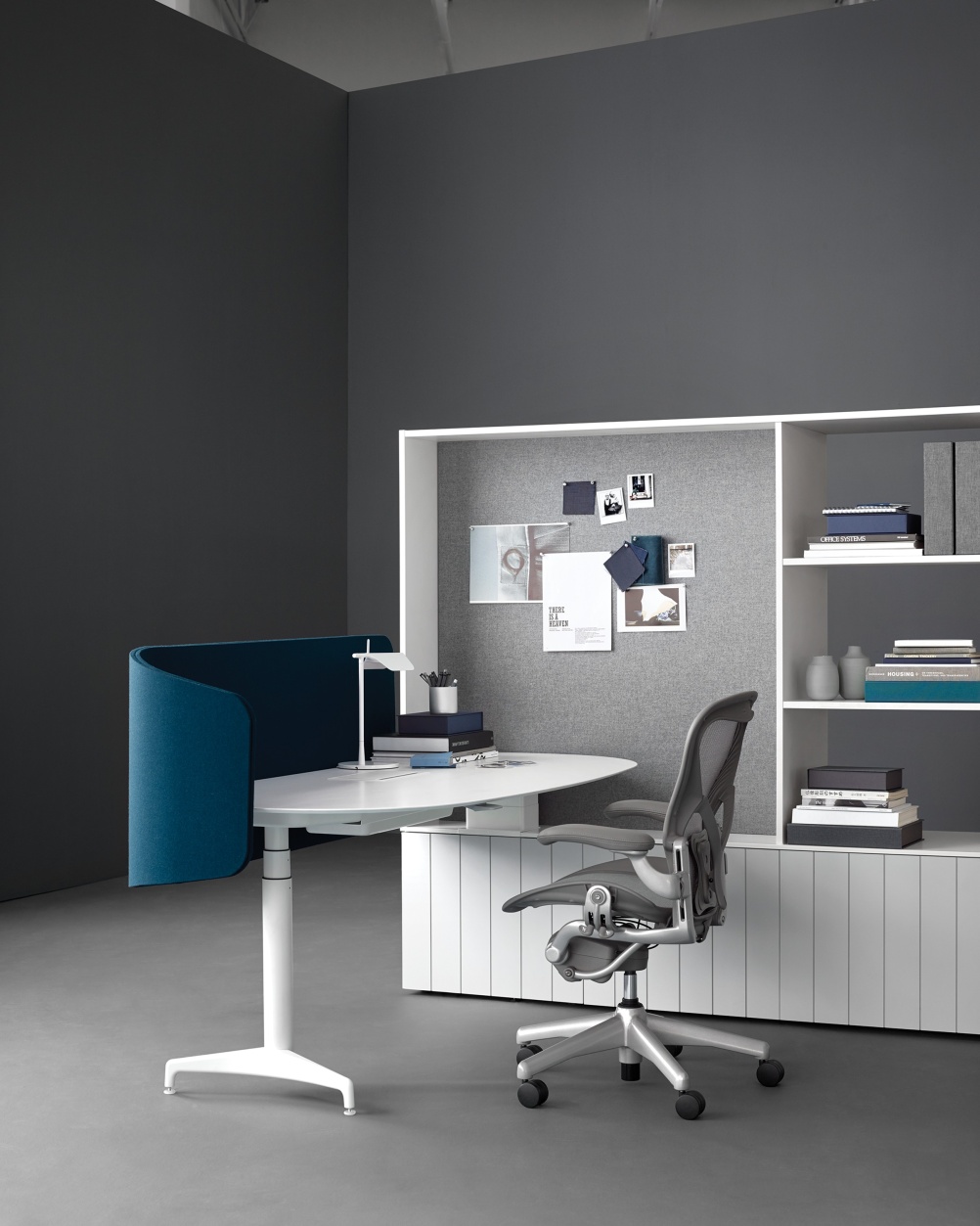
It’s this idea of enhancing collaboration, ease and productivity that Industrial Facility’s Locale furniture collection, created by the consultancy’s founders Sam Hecht and Kim Colin, aims to facilitate.
Hecht says, ‘We started off by having a conversation about what work meant. The idea that work is attached to a specific place is a historic concept. Previously, we needed to “go to work” to use equipment and be face to face with people – but with technology, what’s the reason to go there now?
‘We still need face-to-face conversation – so with Locale, we wanted a place for spontaneous, quick collaboration’.
‘The ideas are all based on proximity’, Colin adds. ‘Creativity happens where there’s movement. We have to learn to move more’.
The designs are in part inspired by the pair’s travels in Scandinavia, a region where office design looks to create adjustable spaces, both for ergonomic and social reasons through an ease of movement that creates a more dynamic, democratic feel.
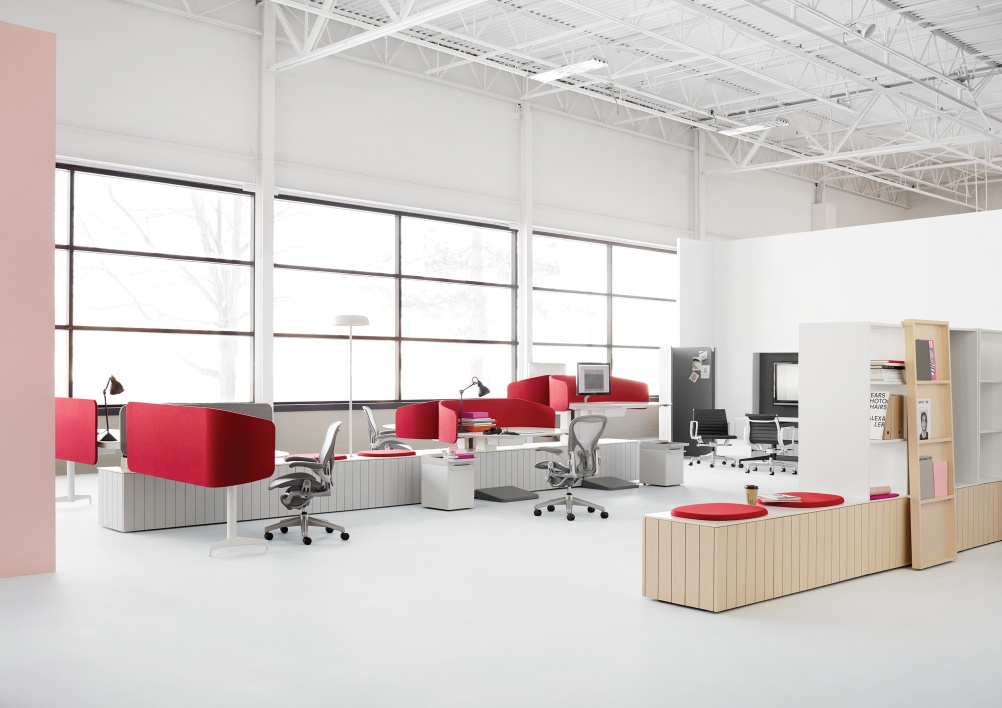
As such, every design in Locale is adjustable. When a colleague comes to speak to another, rather than hovering over them or perching on their desk in an almost patronising, domineering gesture, desks easily move up and down, so two people can stand around them in a more convivial arrangement.
During the development of the collection, Industrial Facility created a number of prototypes, working in each for a period of around three months before making the relevant tweaks. The final collection includes the D Desk and L Desk – both circular-shaped modular workspaces that are height-adjustable.
They also have adjustable screens at the back, meaning that for all the collaborative working they encourage, workers can also close themselves in for privacy.
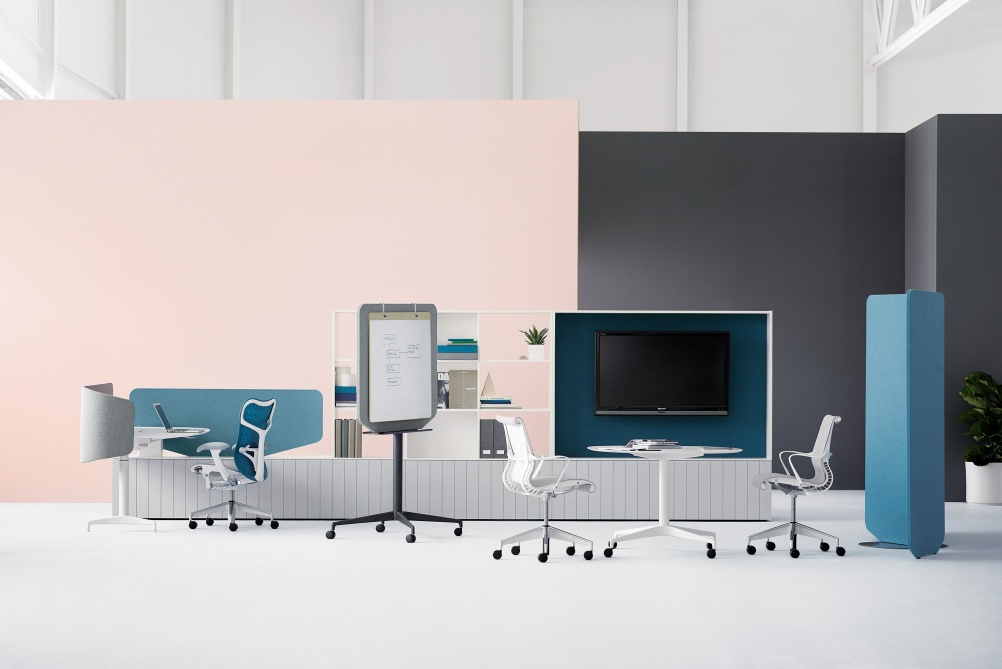
The other solutions to emerge from the Herman Miller research are the Public Office Landscape designs, created by Yves Behar and fuseproject. According to Herman Miller, the concept is the ‘first office system to support causal work and provide comfort, at the desk, in circulation space, and in group areas – all within a consistent design vocabulary’.
The concept is based around the Social Chair piece – a soft seat that promises to be able to accommodate ‘a range of people and postures’.
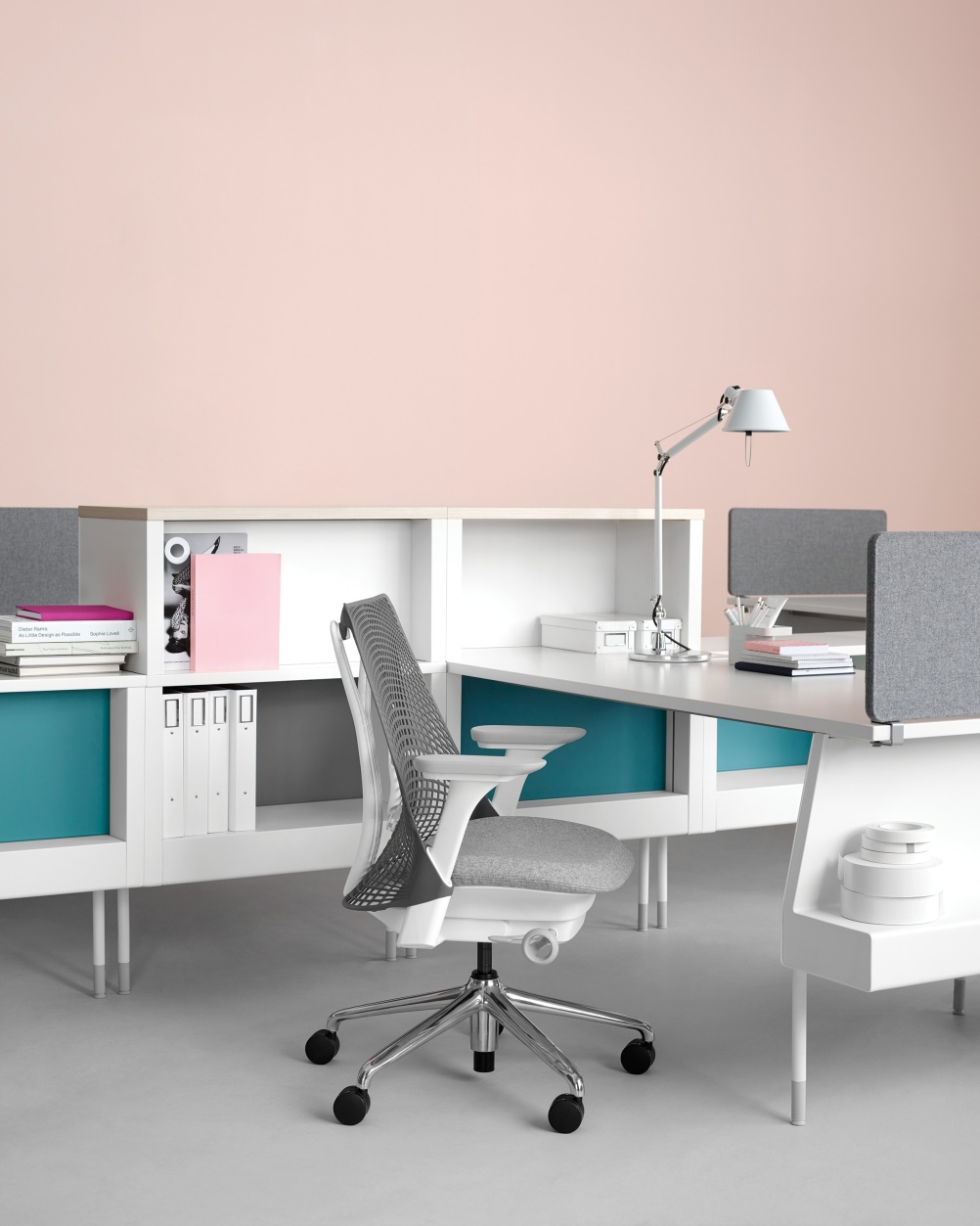
Behar says, ‘Collaboration is everything. There’s no real reason to go to the office any more – the only reason is to collaborate with other people.
‘But in the [traditional office set-up] collaboration isn’t intuitive’.
He points out that meeting rooms are usually separate entities from the main workspace, and often hard to book through a series of request forms, diaries and office managers. Bypassing this, his Public Office Landscape concept allows collaboration and meetings anywhere, at any time, using pieces such as seats with bi-directional movement; moveable screens and AV facilities in open spaces.
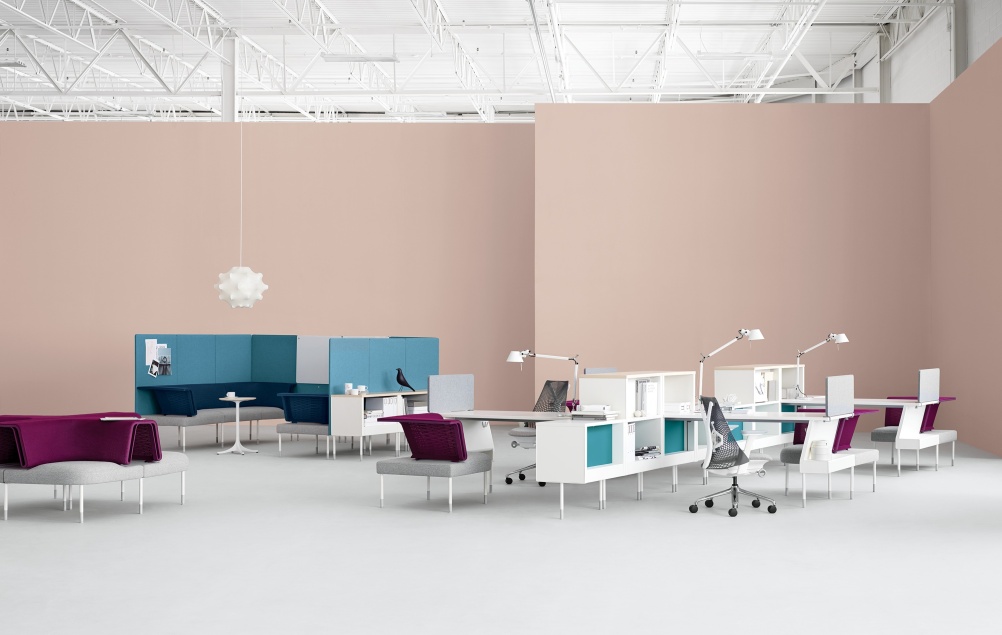
While all these designs are beautiful, and promise a very seductive and utopian way of working, it’s hard to imagine companies investing en-masse in these sort of design-led solutions any time soon. While this is, of course, a shame for workers – surely almost everyone wants to work in beautiful environment, supported by ergonomically savvy furniture – it’s also a shame for businesses too.
A Design Council report entitled Leading Business by Design was published in November last year, investigating how physically embedding design thinking into workspaces could affect productivity. It showed case-study-based evidence that improving the ‘employee journey’ was as vital as improving the ‘customer journey’.
The report was followed by a conference of the same name this year, which saw many companies speak of how significant improvements to employee and brand performance can be brought about through redesigned office spaces.
So we have to agree with Herman Miller’s assertion that it’s time to rethink office design: the space itself, as the company says, has the power to ‘drive innovation and execution and bring an organisation’s strategy to life’.





This article is so ridiculous for the following reasons: It is not a bout world domination by Herman Miller; People do not just ‘work’ as though they are all doing the same thing; the nature of the workplace these days is so varied in terms of location, activity and identity of the company that to mass produce furniture for all is misguided.
It’s beautiful….. just without people in it!
What’s actually ridiculous is your comment Anthony .. The living office is all about thoughtful placemaking to help make what is unique about a given organization .. And I can certainly think of worse things than good design for the world of work
Anything that departs from the currently ubiquitous workbench is welcome. At the same time as legislating that free-range accommodation for chickens is the minimum acceptable, we have allowed office workers to slip into battery-hen accommodation in the name of efficiency. Possibly efficiency of space but not efficiency of productivity. This Office Landscape concept is surely an improvement.
Within an effective office environment you will always find some form of collaboration.Even if it is only brief. THis is the future! Offices need areas that have a mix of open and closed areas to work. This article gives a few examples of splitting up the offices but without destroying office collaboration.
http://paramountinteriors.com/shh-office-furnishing/
I love these spaces but they only show one third of the design challenge – the Lower Third – desks, chairs, storage, walking spaces, works surfaces, sinks, etc..
The Middle Third includes window treatments, presentation spaces, projection screens, whiteboards, etc. for active, flexible, collaborative communication.
The real choice real estate for corporate identify and interest is the Upper Third of any room – space for graphics, hanging objects, 3D displays, signature items, focal points.